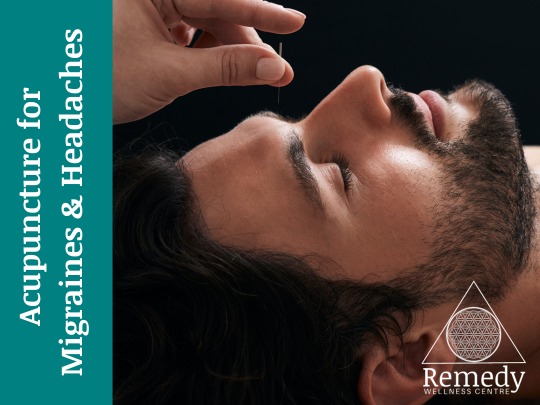Acupuncture is a traditional Chinese medicine technique that involves inserting thin needles into specific points on the body. It is used to promote healing, reduce pain, and improve overall well-being. When it comes to migraines and headaches, acupuncture has been found to be an effective treatment option for many people.
According to traditional Chinese medicine, migraines and headaches are often caused by an imbalance or blockage of energy flow in the body. By inserting needles into specific acupuncture points, the aim is to restore the balance of energy and alleviate the pain and discomfort associated with migraines and headaches.
Acupuncture for migraines and headaches typically involves a series of sessions. During each session, a registered acupuncturist will carefully insert needles into specific points on your body, including the head, neck, and hands. The needles used in acupuncture are very thin and generally cause minimal discomfort.
The exact mechanism of how acupuncture works for migraines and headaches is not fully understood. However, it is believed that the stimulation of acupuncture points triggers the release of endorphins, which are natural pain-relieving chemicals in the body. Acupuncture may also help to relax muscles, improve blood circulation, and reduce inflammation, which can all contribute to relieving migraines and headaches.
It is important to note that while acupuncture can be effective for many individuals, it may not work for everyone. Additionally, it is recommended to consult with a qualified healthcare professional or a licensed acupuncturist before starting any acupuncture treatment. They can assess your specific condition and provide personalized advice and treatment options.
The Five Main Points Used to Treat Migraines and Headaches
While there are many acupuncture points that can be used to treat migraines, here are five commonly used points:
1. Taiyang (EX-HN5): Located at the temple region, slightly anterior and superior to the ear, this point is often used for relieving headaches, including migraines. It is believed to help release tension and promote blood flow in the head.
2. Fengchi (GB20): Found on the back of the neck, in the hollow between the two large muscles at the base of the skull, this point is known as the “Wind Pool” and is frequently used for treating migraines. It is believed to help relieve pain, reduce muscle tension, and promote relaxation.
3. Hegu (LI4): Situated on the back of the hand, in the webbing between the thumb and index finger, this point is commonly used for various types of pain relief, including headaches. It is believed to help regulate energy flow and reduce pain and tension in the head.
4. Taichong (LV3): Located on the top of the foot, in the depression between the big toe and the second toe, this point is associated with the liver meridian and is often used for treating headaches and migraines. It is believed to help soothe liver energy, reduce tension, and alleviate pain.
5. Baihui (GV20): Situated on the top of the head, at the midpoint of the line connecting the apexes of both ears, this point is known as the “Hundred Meetings” and is commonly used for various conditions, including migraines. It is believed to help balance energy flow, promote relaxation, and relieve pain in the head.
It’s important to note that the selection of acupuncture points may vary depending on the individual’s specific condition and the practitioner’s assessment. Therefore, it is recommended to consult with a qualified acupuncturist who can provide personalized treatment based on your needs.

